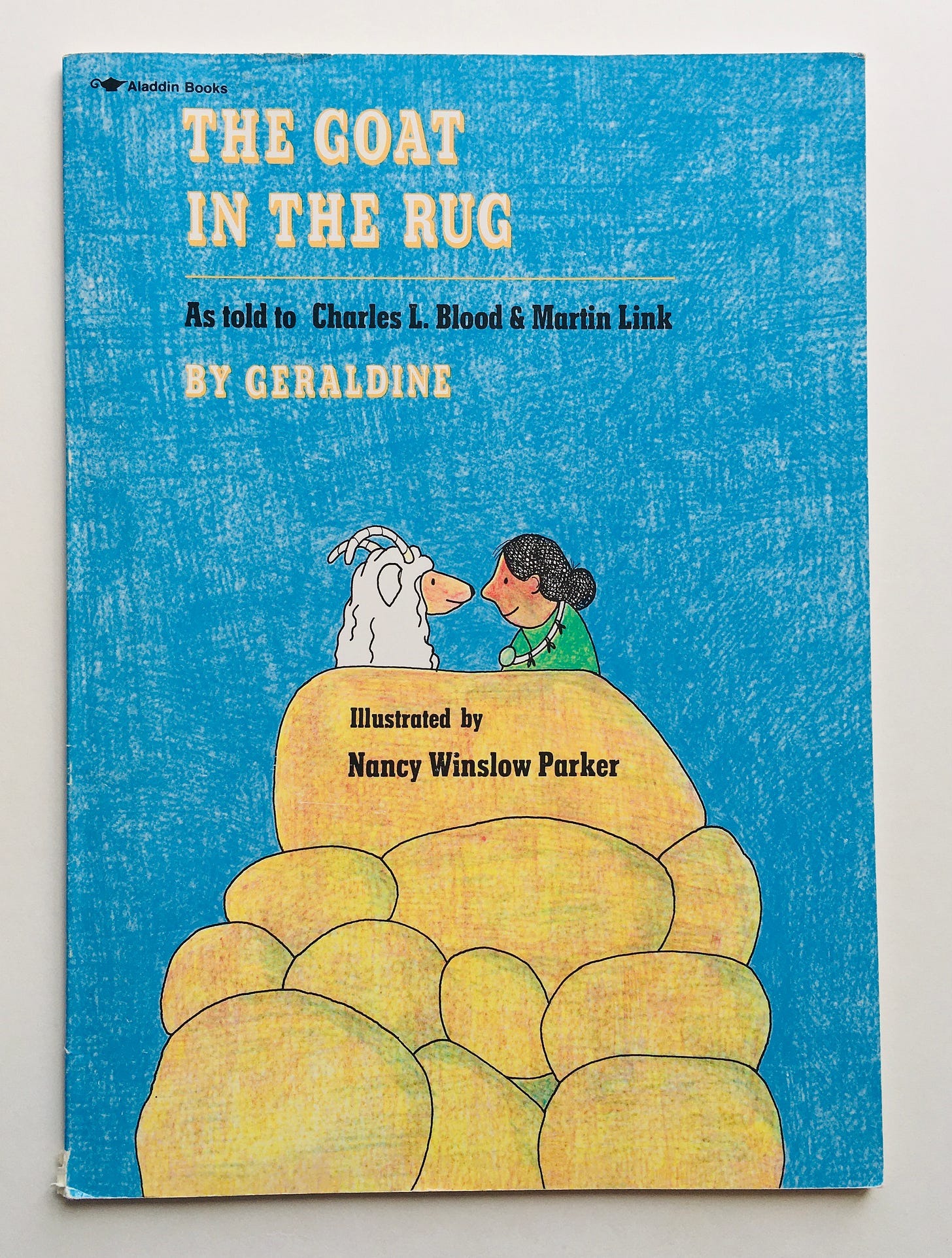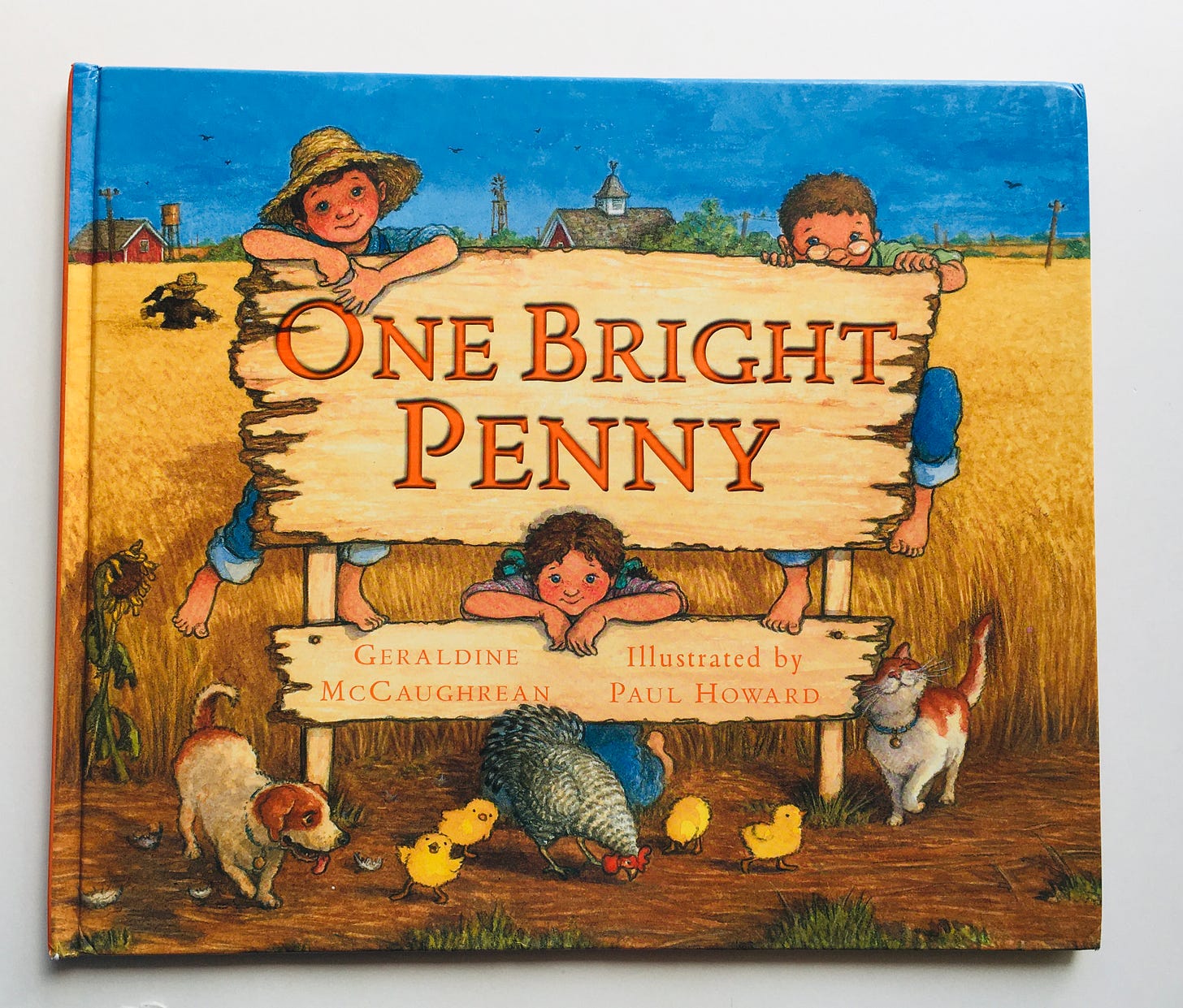Hi there. It’s another Wednesday. Not gonna lie and say this week is going well because it’s actually all kinds of sideways…
The tooth fairy stopped by our house last night but forgot, for many reasons including fatigue and panic when the toothless child awoke for a moment, to take the actual tooth 😬 We had a good conversation this morning about how everyone makes mistakes, no one is perfect — not even the tooth fairy. (Sideways is a nice word for how my week is going.)
Nevertheless, I am determined that today will be better than yesterday. ON WE GO.
My Brother Charlie by Holly Robinson Peete and Ryan Elizabeth Peete, illustrated by Shane W. Evans (2010)
“We’ve always been together — even in Mommy’s tummy — my brother Charlie and me.” Written by the mother and sister of a boy with autism, so begins this warm and loving peek into the life of a family, specifically a sister’s experience with her twin brother. The reader learns many things that make Callie and Charlie alike (their curly hair and brown eyes, their love for hot chocolate and marshmallows) and different (Callie is older by two minutes and loves to talk, Charlie is “skinnier and goofier” and hates math) before learning about Charlie’s autism, which Callie explains in clear, concrete ways, describing specific behavior, adding that “Charlie’s brain works in a special way...”
While the focus here is on Charlie’s autism, what I love most is the holistic picture painted by the authors (alongside Evans’ real, vibrant mixed media pictures) — all siblings, regardless of their neurodiversity, have ups and downs, good times and bad, and this story does a lovely job of illustrating that. Toward the end Callie says, “Charlie has autism. But autism doesn’t have Charlie” and if that is, I think, an excellent summary of what this heartwarming, welcome book is about.
The Goat in the Rug by Geraldine, as told to Charles L. Blood and Martin Link, illustrated by Nancy Winslow Parker (1976)
I’d heard good things about this book for a long time before I finally picked it up, and I’m so glad I did — in this title readers meet a sheep named Geraldine and her Navajo friend, Glenmae, a weaver. One day Glenmae decides to weave Geraldine into a rug, and the story from that point is a fascinating blow-by-blow account of how wool comes off a sheep and makes its whole journey into a rug.
A note at the end states, “This is a true story of weaver and her goat who lived in the Navajo Nation at Window Rock, Arizona,” and the specifics of this, the details that makes this a story about a Navajo rug as opposed to any other, are peppered throughout (Glenmae uses yucca soap to wash Geraldine’s wool, “just as every Navajo weaver before her had done for hundreds and hundreds of years, Glenmae formed a design that would never be duplicated”). Parker’s illustrations, which look like pen and colored pencil, add a lot of warmth and entertainment here, as she portrays not only the surprisingly interesting process of rug-making but also the close relationship between human and animal (I love the page where Geraldine leans her body against Glenmae’s at the loom).
This is a gentle, humorous book that offers readers a respectful glimpse into a beautiful indigenous art form.
One Bright Penny by Geraldine McCaughrean, illustrated by Paul Howard (2002)
Geraldine McCaughrean is one of those authors who is not as well-known as she deserves to be, so if this is your first introduction to her, it is worth checking out her body of work. Two of her collections — Stories From Shakespeare and The Canterbury Tales had a profound effect on my childhood — but I had no idea she wrote shorter picture books until coming across this title.
The story begins with a mean farmer father who offers to move into the chicken coop and give the farm to whichever of his three children can figure out how to fill up the barn without spending more than a penny. The boys, Bill and Bob, give it a good shot — Bill stuffs the barn with wagonloads of turkey feathers, Bob suffuses it with the light from a thousand candles, but both times a small error causes their father to find fault with their endeavor. It’s not until clever Penny thinks on the problem and decides to spend her penny on a banjo, which she uses to host a community dance and thus, fill the barn with music. (Though she meets the challenge and bests her father, she invites him to give the farm to the children and take it easy, rather than be banished to the chicken coop forever.)
Howard’s rich, warm illustrations share all the details of the rural American setting of this bright tale in which a thinking person wins out — not in a brains-over-brawn way, as all three kids come up with inventive, smart solutions to the problem, but in a way that marries thoughtfulness with resourcefulness, making something out of almost nothing. This is a unique and entertaining read.
Possum Come A-Knockin' by Nancy Van Laan, illustrated by George Booth (1990)
If you’re unwilling to get into the rhythm of a book — to really lean in and let the tempo take over — then this is not the title for you. But there are bonus points here if you’re not only willing to get into it but also do a bit of a Southern accent, which is easy because the punctuation makes this a rollicking read — it’s a bit as if a hoe-down came to life on the page.
The story here is simple: a possum comes to the door of a multi-generational family home, inside of which each member is doing their own thing, and he knocks again and again to the increasing alarm of those inside. Booth’s pen and watercolor illustrations convey every hilarious, imaginative moment here, including the minute everyone realizes something weird is going on: “Then Brother came a-leapin’ and Sis came a-runnin’ and Baby came a-crawlin’ and dawg started howlin’ and Pappy was a-chucklin’ and Granny’s eyes was twinklin’ as Ma followed Pa to the door.” When they finally open the door the silent but somehow still sassy possum hides behind a tree, to the delight of small readers.
We never read this book at bedtime — it has too much energy and spirit (which is a compliment, just not when I am trying to wind down two young children) but I am happy to pick it up any other time of day. It’s a very fun, and funny, read.
Daniel Finds a Poem by Micha Archer (2016)
If poetry intimidates you — or the idea of sharing it with the children in your life gives you pause — this is the perfect title for you. Daniel is a little boy who is well-acquainted with all the beings in the park — the trees, the rocks, the animals. One day he sees a sign advertising Poetry in the Park and he wonders, well, what is poetry? In what I find to be the most beautiful part of this book, the animals of the park respond — on each successive day of the week, Spider, Squirrel, Chipmunk, Frog, Turtle, Cricket, and Owl all share their idea of what poetry is. On Sunday Daniel wakes up ready to share what he has learned — and performs a full poem, with one line from each animal, at Poetry in the Park.
I am, as you may have noticed, a true blue poetry lover, so the idea that a poem comes from the world around us resonates and gives me all the warm fuzzies, but I also noticed that this book (which we read for our June Morning Time*) helped my children better understand one possible genesis of poetry. We’ve had several conversations about what poetry is to us (which is, truly, one of the few moments I’ve been waiting for since the day I became a mother).
Archer has created such a beautiful book — her gorgeous, lush collage is a pleasure to experience alongside her thoughtful prose — and I am glad it exists in the world to help children and adults alike go out and find a poem.
*If you want to read more about our Morning Time, check out the February issue of (How) Can we read?, about our reading routines
Thanks so much for reading today and always,
Sarah








